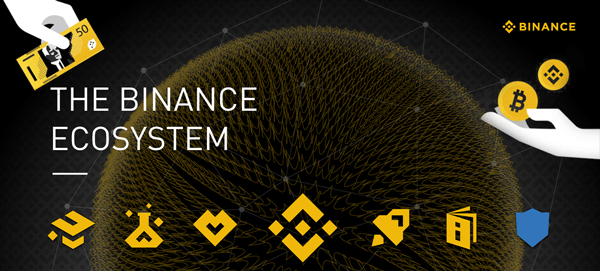
The digital financial environment continues to develop almost every second, which is no surprise to those in the crypto sector. Among such technological advancements, a new project called StrongBlock has popularized the concept of the node as a service (NaaS) on the blockchain. NaaS is an alternative to running entire blockchain nodes on your own; it provides developer infrastructure and tools for setting up and managing blockchain nodes.
Connected blockchain nodes relay, transmit and store decentralized blockchain data. But, what is a blockchain node? A node, also known as a Full Node, is a device that stores the blockchain’s whole transaction history. But, who is behind the creation of the StrongBlock ecosystem?
The StrongBlock team includes CEO David Moss and chief technology officer Brian Abramson, who are enterprise software and blockchain veterans. Corey Lederer, chief product officer, is also among the StrongBlock founders’ team and has extensive experience in managing technology products.
Related: Dangers of hosting your own Ethereum 2.0 node, explained
StrongBlock sees the blockchain as the way of the future, but unless you’re well-versed with this technological breakthrough, it can be a risky place to enter. As a result, StrongBlocks’ objective is to make it easier for anyone to support and participate in blockchains.
This article will deep dive into the NaaS concept and explore what makes StrongBlock unique, how to make money through StrongBlock and how to buy the STRONG token.
StrongBlock explained
StrongBlock is a blockchain platform aimed at revolutionizing the way blockchain networks operate. The reason for its simplification is the simple NaaS tool, which allows users who aren’t well-versed in blockchain to build a blockchain-compliant node quickly while compensating them for running it.
Before StrongBlock’s NaaS, running Ethereum nodes required an extensive understanding of blockchain as well as the ability to code and a server capable of running the node throughout the day. In summary, diving into nodes before StrongBlock required either a lot of effort or a high level of knowledge to make it simple.
In addition, rewards were reserved for miners that solved complex mathematical problems, whereas no such monetary rewards were distributed to nodes. There is no way to assess the performance of nodes.
To address the above issues, StrongBlock automated all of the processes, allowing everyone to participate in the blockchain revolution. Users can create a node in seconds using the StrongBlock platform. They can also add their node to obtain daily STRONG token rewards. STRONG is StrongBlock’s governance token, which developers use to enable token holders to contribute to determining the protocol’s future.
What are Strong nodes?
A Strong node is a node that supports the Ethereum network. It rewards node operators a “Node Universal Basic Income” (NUBI) based on the number of Ethereum blocks they contribute to the network’s upkeep. However, the number of nodes, token price, node revenue and nonfungible token (NFT) ownership are all factors that influence rewards; they are variable and not guaranteed.
Related: Nonfungible tokens: How to get started using NFTs
Strong nodes are run as a service; therefore, they do not require hardware and this allows anyone, even non-technical people, to build a blockchain-compliant node in seconds and get paid for running it.
How does StrongBlock work?
The StrongBlock protocol is designed to give NUBI continually. NUBI rewards are currently paid in STRONG, and in the future, the company will be paying them as NFTs. The protocol is then governed by those who have obtained STRONG in this manner. Potential reward shortfalls can be rectified by the community in a variety of ways as the protocol grows.
The rewards are measured based on ongoing contributions per node, burning STRONG for NFTs, renewal fees, lowering NUBI and creating different NUBI classes. Furthermore, there are two methods for using nodes within the StrongBlock protocol. Bringing your own Node (BYoN) offers additional flexibility and the ability to further personalize your node, whereas StrongBlock NaaS is faster and easier to set up.
Both approaches offer the same base NUBI incentives, but future additions may give BYoN nodes more opportunities than NaaS nodes. Also, the monthly fee for NaaS is $14.95 (paid in ETH), whereas it varies in the case of BYoN.
What is a STRONG token?
The STRONG token (now referred to as STRNGR) is an Ethereum-based ERC-20 token that runs on the Ethereum network. The coin is a governance token that will eventually lead to StrongBlock’s decentralized system.
While the team generated 10 million STRONG tokens, they burned roughly 95% to develop a correct tokenomics for the system. The system continues to burn extra STRONG tokens with each new node deployed to maintain a deflationary token supply.
How to launch a blockchain node using StrongBlock
To launch a blockchain node using StrongBlock, ensure that you have a digital wallet. StrongBlock’s NaaS platform is compatible with MetaMask and does not support multisig wallets.
To cover the transaction’s gas fees, you’ll need to buy some ETH. Connect your wallet to your preferred crypto exchange and purchase 10 STRNGR tokens. MetaMask can be downloaded as a browser extension from the MetaMask website. Customers can choose Chrome, Brave, or Firefox browsers.
Check the gas fees by connecting your wallet containing 10 STRNGR to the app.strongblock.com website. The Etherscan Gas Tracker can be used to check gas fees, which vary based on the crypto-economy.
Setting up or launching a node costs 10 STRONG tokens plus gas fees. Each node is then rewarded with 0.091 STRONG tokens, which can serve as a source of passive income. To create blockchain nodes using StrongBlock, follow the steps below:
You’ll be able to pay node fees, see your accrued awards, and claim rewards after your node is created. The first monthly node fee is included when you create your node. After that, you’ll have to manually pay the node charge every 30 days. However, the node fee payment structure has a 90-day prepaid restriction.
If you are not able to see the created node, check for the approved, pending or canceled transactions to speed up the process.
What are the tax implications of StrongBlock?
Because of the nature of StrongBlock and the impossibility of selling the asset, Ethereum node services cannot be classified as an asset in the crypto and tax worlds; instead, they will be classified as an expense.
As a result, when you buy StrongBlock, the first purchase will be considered a business expense, and everything you earn from it will be considered a taxable income or earning. The taxable rate will depend upon the country of your residence and can be determined by your present income level. To understand your taxable obligations, you may consider reading Cointelegraph’s guide to filing cryptocurrency taxes in the US, UK, and Germany.
Is StrongBlock a good investment?
If you are a blockchain lover, you may find StrongBlock a promising project with which to launch Ethereum nodes and earn passive income. However, considering the sky-high gas fees and crypto market volatility, you should always conduct due diligence before putting money into any project.
That said, if you think that your financial objectives, the organization’s vision and the return on investment are aligned, then you may become an active participant in the project and get rewarded with STRONG tokens. Nonetheless, do not forget the risk exposure you are willing to take.
The platform intends to support other protocols like Ethereum’s consensus layer upgrade (previously ETH 2.0) soon. It also plans to introduce features such as NFT gamification and a marketplace, which may encourage blockchain enthusiasts to participate in the blockchain revolution led by StrongBlock.





 Bitcoin
Bitcoin  Ethereum
Ethereum  Tether
Tether  XRP
XRP  USDC
USDC  TRON
TRON  Lido Staked Ether
Lido Staked Ether  Dogecoin
Dogecoin  Figure Heloc
Figure Heloc
Be the first to comment